-
play_arrow
Like It A Lot Radio Todays Hits and Modern Electronica

THE GLOBAL HISTORY
From the early invention to modern high end streams over IP
Educate yourself on the history of musicradio. From the early invention of radio to todays modern streams over 5G.
timeline
In 1896, Marconi was awarded British patent 12039, Improvements in transmitting electrical impulses and signals and in apparatus there-for, the first patent ever issued for a Hertzian wave (radio wave) base wireless telegraphic system. In 1897, he established a radio station on the Isle of Wight, England.
The first voice and music signals heard over radio waves were transmitted in December 1906 from Brant Rock, Massachusetts (just south of Boston), when Canadian experimenter Reginald Fessenden produced about an hour of talk and music for technical observers and any radio amateurs who might be listening. Since then. Broadcasting of music has come a long way.
Music radio, particularly top 40, has often acted as both a barometer and an arbiter of musical taste, and radio airplay is one of the defining measures of success in the mainstream musical world. In fact, the rise of rock music to popularity is intimately tied to the history of music radio. Early forms of rock had languished in poor areas of the South. It was enjoyed mostly by rural blacks, with notable exposure in Memphis, Tennessee due to the all African American programming of WDIA. Rock music entered the mainstream during the 1950s because of controversial white DJs such as Dewey Phillips, Alan Freed, Dick Clark and Wolfman Jack with an appreciation for black music.
For many years, many listeners have been dissatisfied with the content of radio programming since the decline of early free form rock radio. The popularity of offshore pirate radio stations in the United Kingdom was an early symptom of frustration with the often overly safe and occasionally politicized playlists of commercial radio in the past.
The growth of Internet radio from a small experimenter’s toy in the mid-1990s to a huge phenomenon allowing both small do-it-yourselfers and large commercial stations to make their offerings available worldwide was seen as a threat to over-the-air music broadcasting, and was nearly shut down by onerous licensing demands made by the recording industry.
Meanwhile, the rise of satellite radio services as a major competitor have brought many of the advantages of Internet radio to an increasingly mobile listening public, including lack of censorship, greater choice, a more eclectic approach to format programming, and static-free digital HD sound quality. Indeed, one-size-fits-all programming is no longer seen as tenable by some, as the diversity of musical tastes among the listening public have created a proliferation of radio formats in what some might call a form of narrowcasting.
Recent history suggests that radio is bolstered rather than challenged by new technology. As a multi-platform medium radio is accessed increasingly through mobiles, PCs, and tablets.
In the immediate future, audio is predicted to remain a vibrant and exciting sector with interesting new developments in the pipeline such as voice control moving into other locations (in-car and wearables); the rise of dynamic creative within digital audio ads to stream the most pertinent version of an ad to each individual listener; increasing use of 3D stereo to deliver a more immersive audio advertising experience.
New technology is now driving music radio towards internett streaming. 5G mobile networks are being built all over the world making streaming the new way of consuming audiovisual content.
FM RADIO: The NEW MUSIC WINNER
People came to FM for music and fun in the 1970's. Leading the way to the magical years for musicradio in the 80's and 90's.
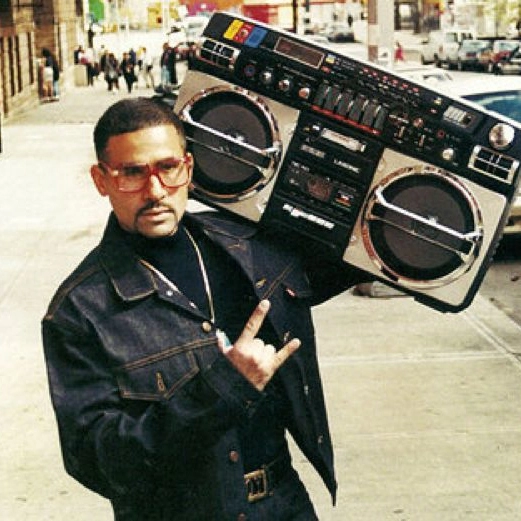

By the end of the 1970s, 50% of radio listeners were listening to FM stations, ending AM’s historical lead. By 1982, FM commanded 70% of the general audience, and 84% among the 12- to 24-year-old demographic. The shift in popularity of FM radio over AM in United States during the 1970s has been called by record producer Steve Greenberg “a seismic technological shift that had torn apart the very idea of the mass audience upon which pop hits depended”. AM radio would adapt by shifting its focus to talk radio, which would be deregulated in the late 1980s after the repeal of the Fairness Doctrine.
New York Radio Wars
In this YouTube video you'll get a reminder of how competative the Top 40 FM radio marked was in New York during mid 80's.
New York CHR Battles from WCBS-TV 1983. The focus is on WHTZ (Scott Shannon,) WPLJ (Jim Kerr) and WAPP (Joe Krause) as the battle is on to be number one! in the world’s most competative radio marked; New York.

CHR: Top 40 is born
According to producer Richard Fatherley, Todd Storz was the inventor of the format, at his radio station KOWH in Omaha, Nebraska. Storz invented the format in the early 1950s, using the number of times a record was played on jukeboxes to compose a weekly list for broadcast. The format was commercially successful, and Storz and his father Robert, under the name of the Storz Broadcasting Company, subsequently acquired other stations to use the new Top 40 format. In 1989, Todd Storz was inducted into the Nebraska Broadcasters Association Hall of Fame.
The term “Top 40”, describing a radio format, appeared in 1960. The Top 40, whether surveyed by a radio station or a publication, was a list of songs that shared only the common characteristic of being newly released. Its introduction coincided with a transition from the old ten-inch 78 rpm record format for single “pop” recordings to the seven-inch vinyl 45 rpm format, introduced in 1949, which was outselling it by 1954 and soon replaced it completely in 1958. The Top 40 thereafter became a survey of the popularity of 45 rpm singles and their airplay on the radio. Some nationally syndicated radio shows, such as American Top 40, featured a countdown of the 40 highest ranked songs on a particular music or entertainment publication. Although such publications often listed more than 40 charted hits, such as the Billboard Hot 100, time constraints allowed for the airing of only 40 songs; hence, the term “top 40” gradually became part of the vernacular associated with popular music.
An article in the Spring 2012 issue of Nebraska History magazine offered this comment as to Todd Storz’ legacy: “the radio revolution that Storz began with KOWH was already sweeping the nation. Thousands of radio station owners had realized the enormous potential for a new kind of radio. When television became popular, social monitors predicted that radio would die. However, because of the invention of Storz and others like him, radio would be reborn”.
Storz is credited by some sources as helping to popularize rock and roll music. By the mid-1950s, his station, and the numerous others which eventually adopted the Top 40 format, were playing records by artists such as “Presley, Lewis, Haley, Berry and Domino“.
Stationlist
Famous Top 40 radiostations

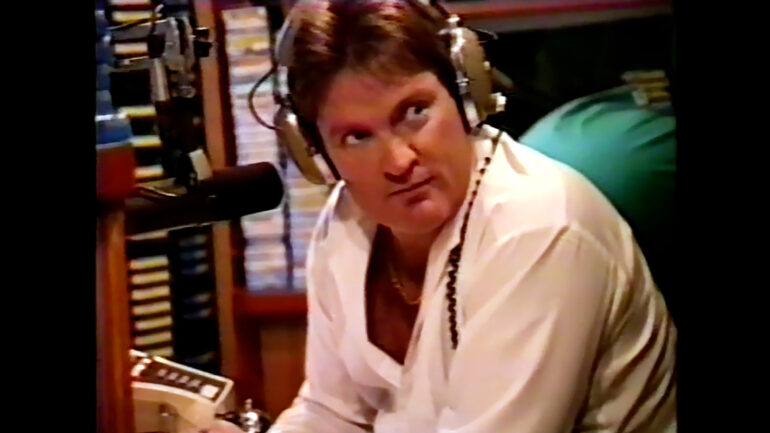 The station WHTZ, signed on the air at 6:08 a.m. on August 2, 1983 with new program director and morning jock Scott Shannon. The station’s call sign represents the word «hits» with a Z, a fact pointed out in an early station promo campaign where it was proclaimed that ‘finally, there’s a new way to spell Hitz in New York!’ to advertise the new format.
The station WHTZ, signed on the air at 6:08 a.m. on August 2, 1983 with new program director and morning jock Scott Shannon. The station’s call sign represents the word «hits» with a Z, a fact pointed out in an early station promo campaign where it was proclaimed that ‘finally, there’s a new way to spell Hitz in New York!’ to advertise the new format.
Within 74 days of signing on, in autumn 1983, WHTZ had climbed from last place to first in the New York Arbitron ratings book. Over the years, Z100 stayed with a top 40 format, while maintaining high ratings. Scott Shannon left Z100 on January 27, 1989 to start «Pirate Radio» in Los Angeles.
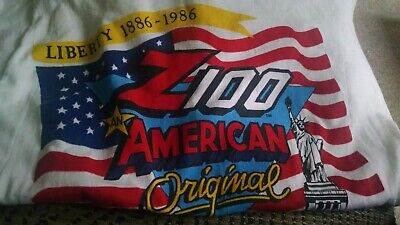 By 1991, the top 40 format nationwide was in an identity crisis due to the rise of alternative rock, hip hop and country. A major sign of this crisis came when WPLJ moved to a hot adult contemporary format by 1992. Z100 responded to this by adding some older songs and introducing an evening talk show called «Love Phones«, which began on November 2, 1992. Ratings gradually dropped during this time. In 1993, Z100 dropped the older songs and began mixing in a moderate amount of rock music which wasn’t normally being played on top 40 stations. Initially, the station had a rock lean, but during the course of 1994, alternative rock began to become prevalent on the station.
By 1991, the top 40 format nationwide was in an identity crisis due to the rise of alternative rock, hip hop and country. A major sign of this crisis came when WPLJ moved to a hot adult contemporary format by 1992. Z100 responded to this by adding some older songs and introducing an evening talk show called «Love Phones«, which began on November 2, 1992. Ratings gradually dropped during this time. In 1993, Z100 dropped the older songs and began mixing in a moderate amount of rock music which wasn’t normally being played on top 40 stations. Initially, the station had a rock lean, but during the course of 1994, alternative rock began to become prevalent on the station.
In April 1996, the station brought in Tom Poleman as its new programming director. Initially, at that point, Z100 dropped all non-modern rock titles and began playing strictly pop alternative.
In October 2007, after years of hovering near the top, Z100 once again became the highest-rated station in New York City, scoring a 5.1 rating in persons 12+ in the Summer book. That marked the first number-one finish for the station since the 1980s, according to Clear Channel New York programming guru Tom Poleman. It also scored a first-place among the 18-34 demographic in the book, as well as a second place in the 25–54 demo.
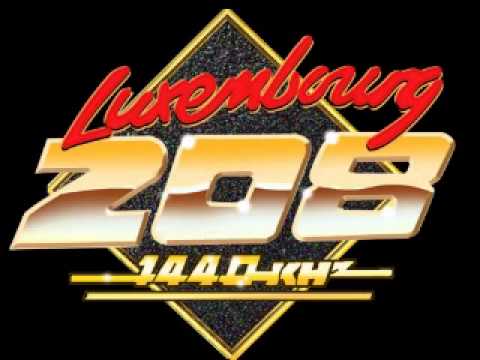
Until the advent of pirate radio in 1964, the evenings-only English-language broadcasts from Radio Luxembourg—208 on the dial and transmitted from the grand duchy—represented the only pop music radio regularly available to european listeners. Although the station’s policy of leasing airtime to record companies meant having to hear a sequence of forgettable records on, for example, the Oriole label, there were unmissable treats, such as the American Top 20 on Sunday nights, which featured records that would not be released in Europe for weeks or even months—and that, even when released, might not be aired.
Europeans where listening to 208 in their bedrooms growing up – making it one of the worlds most influential european radio stations of all time. In August 1990 RTL international was launched. Its new building was inaugurated in 1991, and Radio Luxembourg stopped broadcasting on LW208 30 December 1991. The station continued for some time on satelite only.
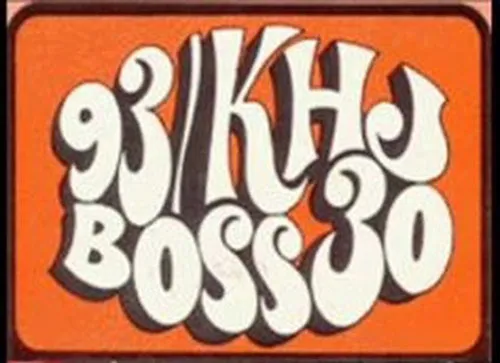
KHJ was a legendary top 40 station from 1965 to 1980. The station switched to a country music radio format in 1980 and back to pop music in 1983. In 1986, KHJ changed its call letters to KRTH, adopting an oldies format as a sister station to KRTH-FM (101.1 FM). Three years later, the station was sold to Liberman Broadcasting who aired Spanish-language formats from 1990 to 2014, using the call letters KKHJ until 2000, when it regained its original calls.
The KHJ format was distinguished by fast-talking jocks, a limited amount of commercials, a cappella jingles by the Johnny Mann Singers, a Top 30 playlist instead of a Top 40, and the promise of “much more music.” Groups such as the Byrds and Sonny and Cher would show up at the Melrose Avenue studio, begging the jocks to play their records.
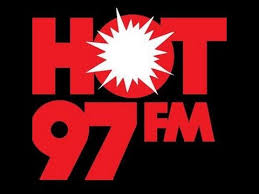
In 1988, NBC began to sell its roster of radio stations, and Emmis Communications made arrangements to buy its two New York City stations, WYNY and WNBC (AM). Emmis sold the 103.5 FM license for the original WQHT to Westwood One, as well as the intellectual property for WYNY, which resulted in the WYNY call letters and country format transferring from 97.1 to 103.5 FM. Conversely, Emmis transferred the WQHT call sign and rhythmic contemporary format from 103.5 to the former WYNY at 97.1 FM, becoming «Hot 97» at 5:30 p.m. September 22, 1988. The first song played on «Hot 97» was MARRS‘ «Pump Up the Volume«
WQHT started to lean towards top 40 by 1989 due to decreasing ratings. By 1990, the station started playing more house, freestyle, and rhythm and blues music, and launched the Saturday Night House Party show
Towards the end of 1992 and early 1993, Hot 97 dropped to «dead last among New York’s three pop stations.»[22]: 336 In response, Emmis named Judy Ellis its General Manager (a position in which she served until 2003), and WQHT started to add more R&B and hip-hop product. The station started a gradual two-year change towards an urban-oriented rhythmic top 40 format.[22]: 320, 334–336
By 2010, WQHT switched to urban contemporary, ending the longtime rhythmic top 40 format at the station.

KIIS-FM began to evolve, first to top 40 in 1976. Rick Dees joined the station for mornings in July 1981 after KHJ switched formats to country music. In February 2004, the decade-long general manager of KIIS-FM, Roy Laughlin, elected not to renew Rick Dees’ contract, replacing him with Ryan Seacrest from sister station KYSR and retaining co-host Ellen K to team with Seacrest.
 Together, they created the nationally syndicated On-Air With Ryan Seacrest, which airs on many of iHeartMedia’s top 40/CHR stations. The station was, according to Radio & Records in 2008, the second-highest revenue billing radio station in the United States, with $66.3 million. In 2010, the station was honored by the National Association of Broadcasters with the Marconi Award for CHR Station of the Year.
Together, they created the nationally syndicated On-Air With Ryan Seacrest, which airs on many of iHeartMedia’s top 40/CHR stations. The station was, according to Radio & Records in 2008, the second-highest revenue billing radio station in the United States, with $66.3 million. In 2010, the station was honored by the National Association of Broadcasters with the Marconi Award for CHR Station of the Year.
Copyright 2022. Ear Candy


